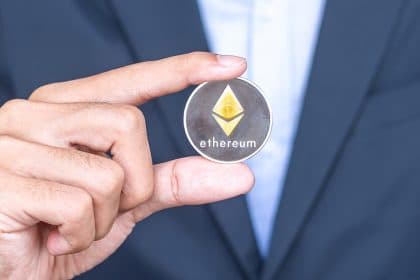XinFin is a hybrid blockchain platform and interoperable smart chain contract with minimal fees and less than 2-seconds transaction confirmation.
Ethereum being the first and original smart contract blockchain, as well as the leading altcoin following Bitcoin among crypto space, developers are frustrated with the transaction speed. Though Ethereum is one of the leading altcoins, the additional flood in gas fees and slower transactions make users jump for alternate solutions.
Additionally, the growth in gas fees has no signs of stopping till 2021, attempting to put ERC-20 projects at a major disadvantage. This discourages users from continuing to use Ethereum, despite the fact that Ethereum 2.0 offers no hope of improvement.
Users are forced to pay absurdly high gas fees or should wait in the line behind the number of transactions, where each block takes 10-20 seconds. As a result, crypto users are finding alternate solutions and mostly they prefer XinFin with 2-second transactions.
According to Vitalik Buterin, an Ethereum team member, the alternate solution for speed and scalability issues is Ethereum 2.0. Nevertheless, many don’t agree with this point. In February, one crypto enthusiast disclosed a $74 gas fee for a $75 SushiSwap transaction. Going to UniSwap still resulted in a $37 fee.
WTF??? pic.twitter.com/0luArQfeaK
— Ran Neuner (@cryptomanran) February 3, 2021
This brings disappointments to the users — especially those working on cutting-edge projects that provide time-sensitive services, who have voiced deep concern about Ethereum’s congestion.
Quick Move to XinFin Network & Other Alternate Platforms
XinFin is a hybrid blockchain platform and interoperable smart chain contract with minimal fees and less than 2-seconds transaction confirmation. Also, the network operates on the XinFin delegated proof of stake consensus (XDPoS) protocol which supports 2,000 transactions per second.
The platform is not interested in wasting time dealing with paperwork, instead, they allow users to bid on and finance development projects in a streamlined manner. XinFin majorly concentrates on collaborating with government projects to seal the global infrastructure’s existing gaps.
Apart from XinFin, there are other blockchain platforms that produce effective solutions for Ethereum’s problems, Tron and EOS are among them.
Tron was launched in 2018 which outpaced Ethereum achieving 2,000 transactions per second. With no transaction fees, it occupies the same line with leading payment processors like PayPal.
EOS is created to allow developers to create decentralized applications. It was launched in 2018. EOS’s scalability compared to Ethereum has contributed to much of the buzz generated, offering a maximum of 4,000 transactions per second.
Until drastic changes are made in Ethereum 2.0, it will face consequences in the crypto world. If high gas fees and slow transaction speed are continued, then Ethereum can be doomed.
next